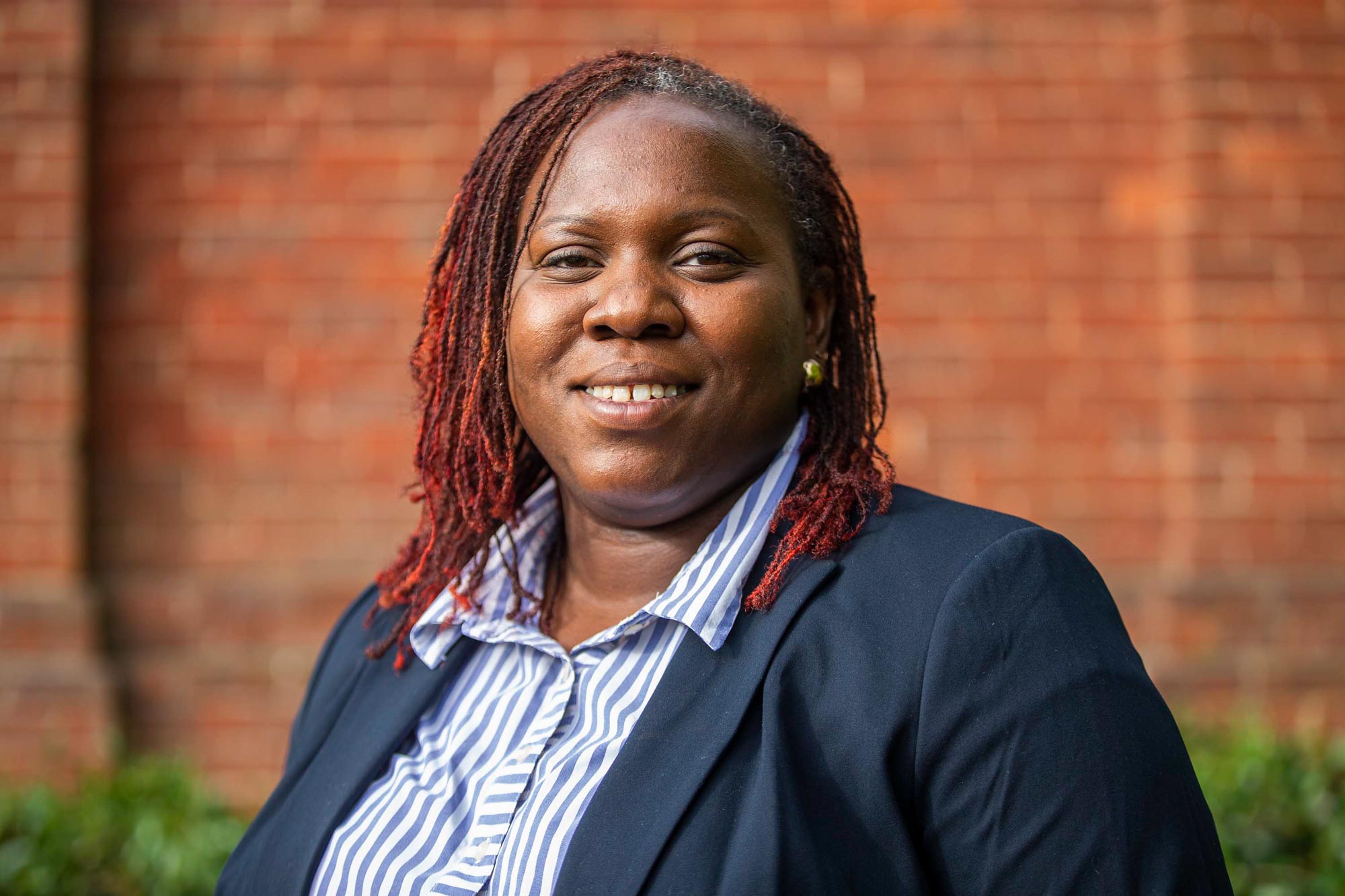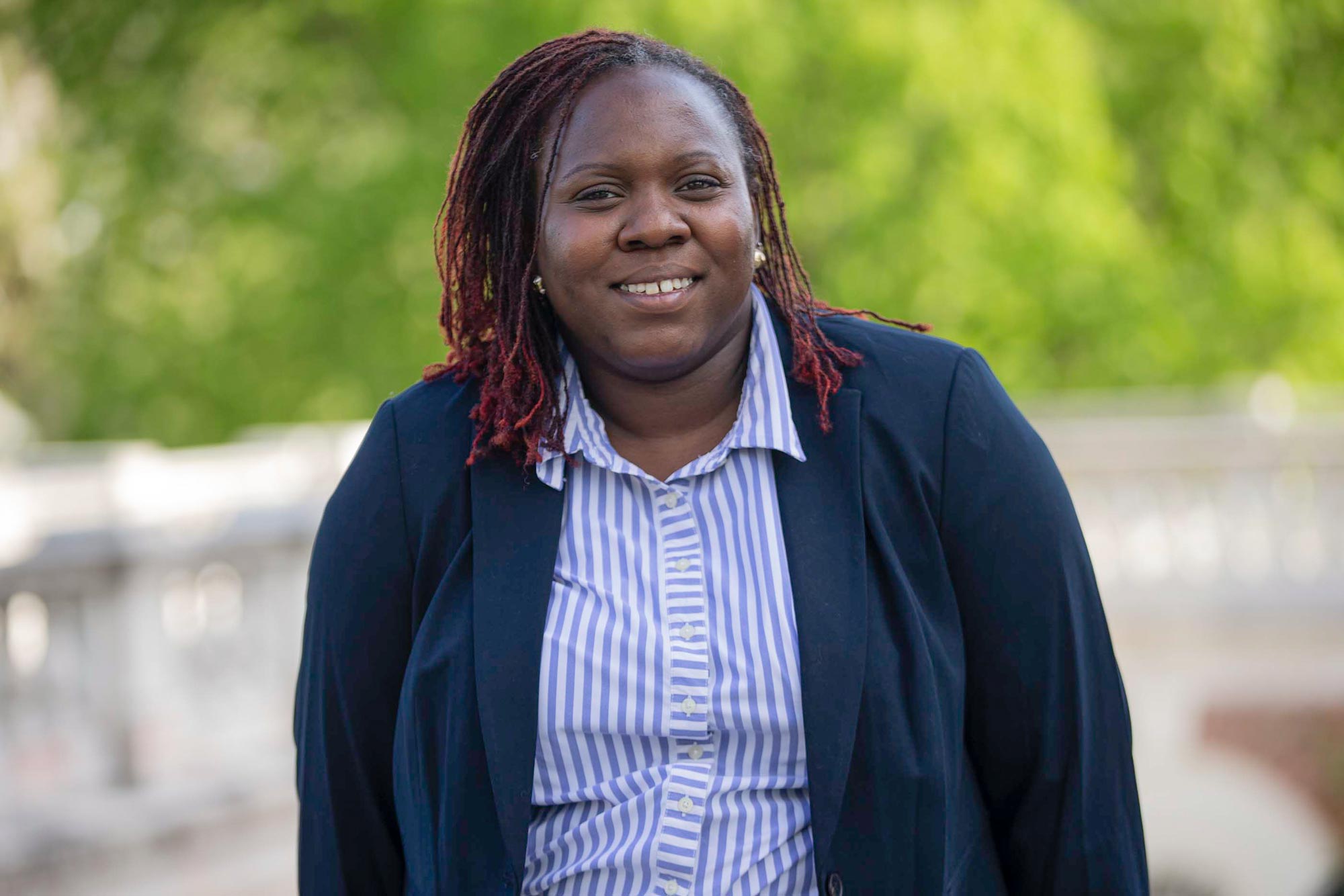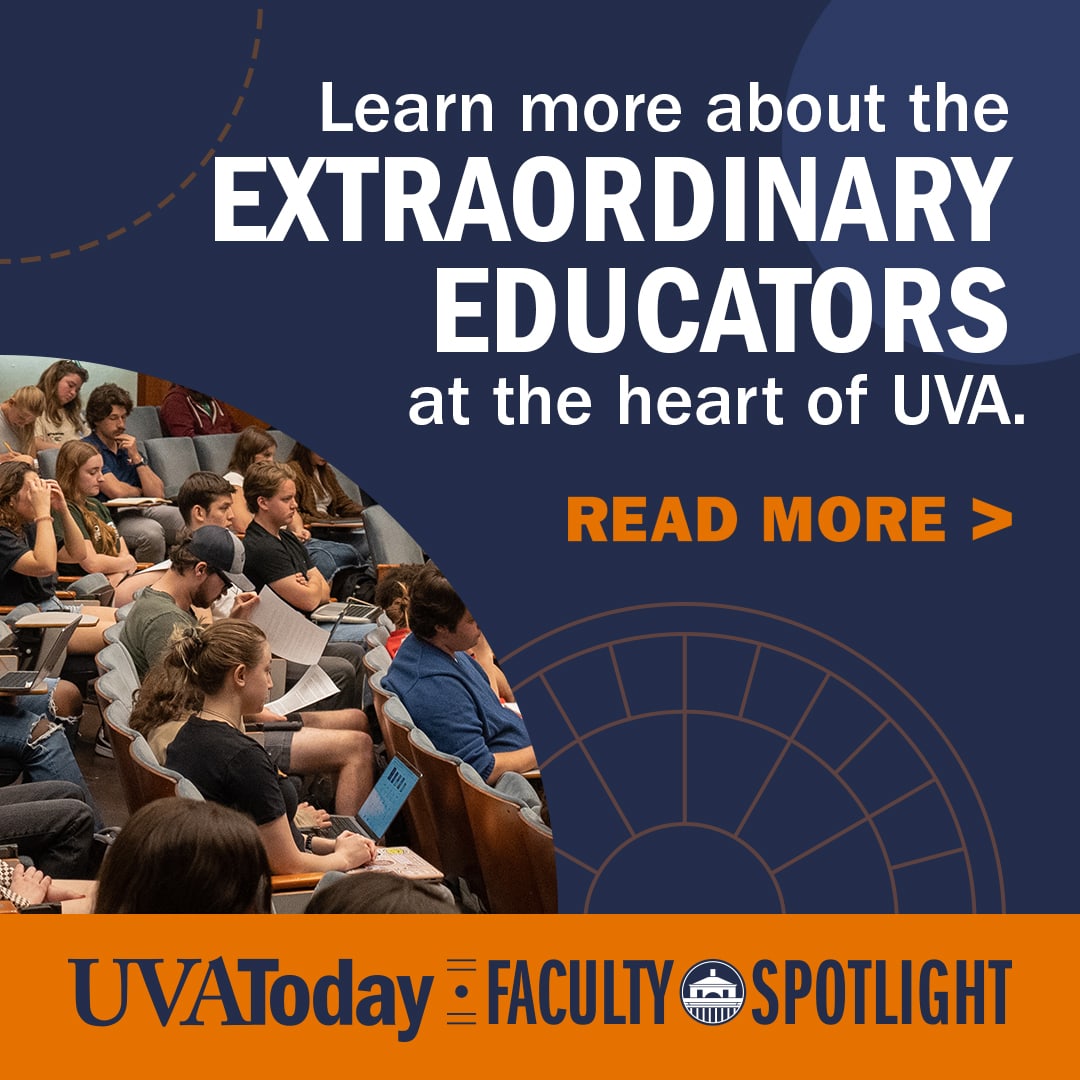When Army Reserve veteran Carla Hallman decided to go back to school, she knew she wanted to finish her college degree, but she did not know exactly where to go.
Turns out, she didn’t have to look far. Hallman, who along with her husband moved to Charlottesville on military orders years ago and decided to make the college town home, will graduate May 22 from the University of Virginia’s School of Continuing and Professional Studies’ Bachelor of Interdisciplinary Studies program.
She will be among the first in her family to graduate from college, one generation after her parents each emigrated from Barbados to Brooklyn, New York.
“I will be one of two of my mother’s children to graduate from college so far,” she said. “When my mom first moved here, she wanted to work as a lab scientist, but someone steered her away from it because she was an immigrant and they told her she would never do well in that job. They steered her away from education, so she really made it a priority for all of her children to learn.”
UVA’s bachelor’s program is particularly well-suited for adult students such as Hallman, who had completed some college credits during deployments with the Army Reserve, which she joined straight out of high school in 2004. After leaving the Army, Hallman opted to enter the working world instead of returning to school, building a successful career in human resources.
Now, she is a human resources manager at Farmington Country Club. She is also a leader in several community organizations, including the board of the Arc of the Piedmont, which serves people with intellectual and developmental disabilities, and the board of the Paramount Theater, where she chairs diversity, equity and inclusion efforts. She is a past president of the Junior League of Charlottesville.
Getting her degree, Hallman said, will be useful for her career and allow her to pursue the Society for Human Resources Management designation of senior certified professional, but it was also a much more personal goal.











